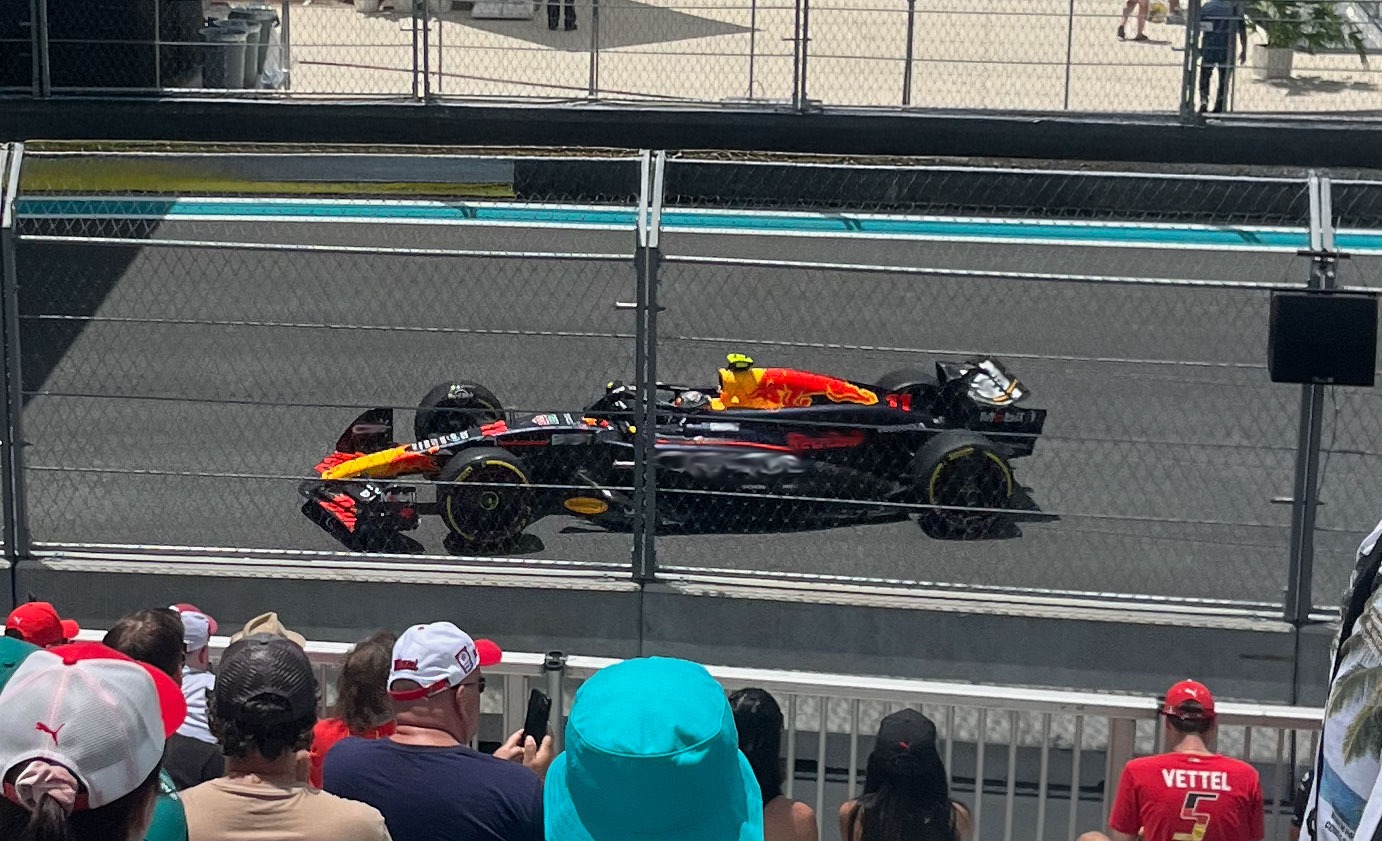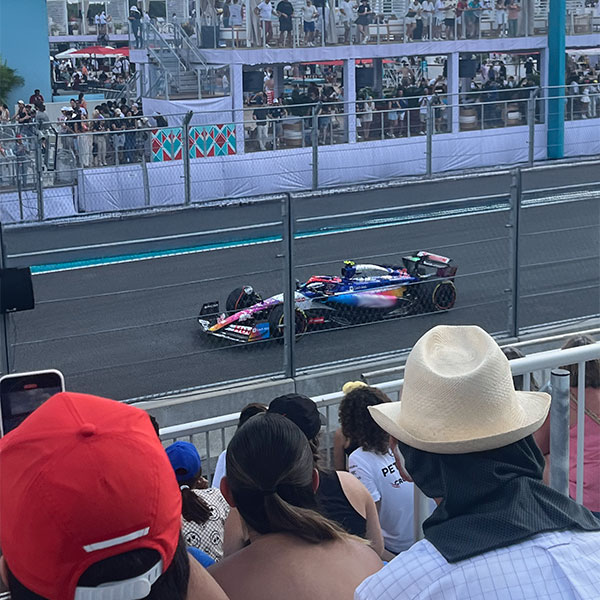Why Formula One Car Livery is the Pinnacle of Design
Last year, we had the incredible privilege of attending Formula 1 Miami and seeing these engineering masterpieces up close. The speed, precision, and aerodynamics of these cars is just amazing. But beyond their engineering prowess, F1 cars are also a canvas for artistic expression. The evolution of F1 liveries—from simple national colors to complex branding masterpieces—reflects both technological advancements and shifting design trends.
The Evolution of F1 Livery
In the early days of Formula 1, cars were painted in solid national colors. British teams raced in British racing green, Italian teams in red, and French teams in blue. This tradition persisted until the late 1960s when sponsorships revolutionized F1 aesthetics. A car’s livery refers to its unique color scheme and branding, serving as both a visual identity and a marketing tool. In 1968, Team Lotus broke new ground by introducing the first commercially sponsored livery with the Gold Leaf tobacco branding, marking the beginning of modern F1 livery design.
The Science of Speed and Style
F1 car design isn’t just about performance—it’s about visibility, branding, and identity. The sleek paintwork and decals must balance aerodynamics with eye-catching aesthetics. Today’s teams use lightweight vinyl wraps instead of heavy paint to maintain the car’s optimal weight and aerodynamics. Matte finishes, pioneered by Red Bull Racing, have become popular for their ability to reduce glare and improve photography.
Iconic Liveries Through the Decades
Over the years, certain liveries have become legendary. McLaren’s red and white Marlboro scheme from the Ayrton Senna era remains one of the most recognizable in motorsport history. Ferrari’s signature Rosso Corsa red has been a staple of the grid, while Williams‘ iconic blue and white Rothmans livery of the ‘90s brought a classic elegance to the sport.
More recently, teams have embraced bold designs. Red Bull Racing consistently delivers striking matte blue and red designs, while McLaren has experimented with retro Gulf liveries and sleek chrome finishes. In 2024, special edition liveries—such as Red Bull’s tribute designs—continue to captivate fans and push creative boundaries.
Innovation Beyond the Track
Formula 1 car livery design isn’t just about aesthetics—it’s a powerful marketing tool. Sponsors pay millions for prime real estate on F1 cars, knowing the global audience will see their logos at every race. The fusion of art, branding, and technology in F1 liveries sets a benchmark for how design can enhance visibility and impact.
If you’re fascinated by high-performance design and want to see how attention to detail can elevate your own brand, check out our branding and website design services. Just like F1 cars, a well-crafted brand combines aesthetics and functionality for maximum impact!
Formula 1 car livery design is a perfect example of how art and engineering come together to create something truly extraordinary. From bold colors to intricate details, each team’s livery tells a unique story. My personal favorite is the Red Bull Racing car—their striking matte finish and dynamic graphics make their cars stand out on the track. Whether on the circuit or in the digital world, great design makes all the difference!
https://www.redbull.com/us-en/evolution-of-f1-cars







